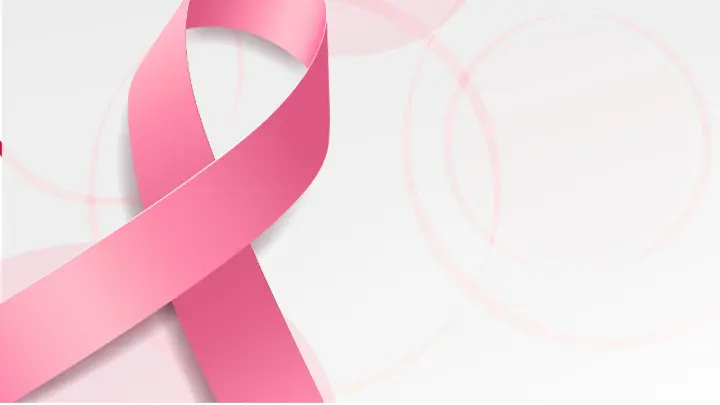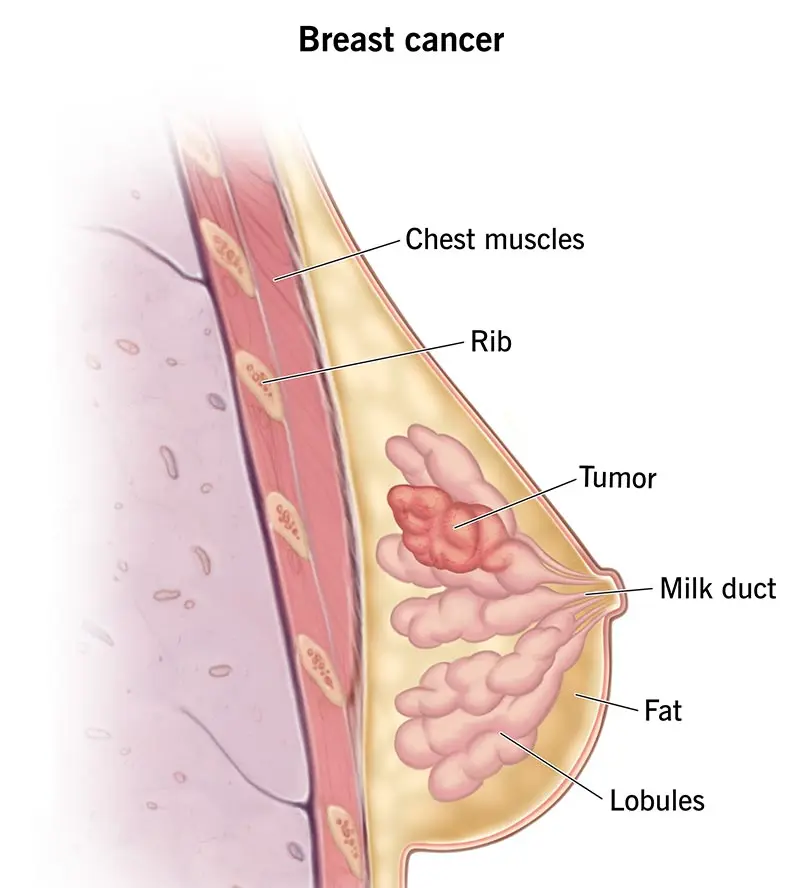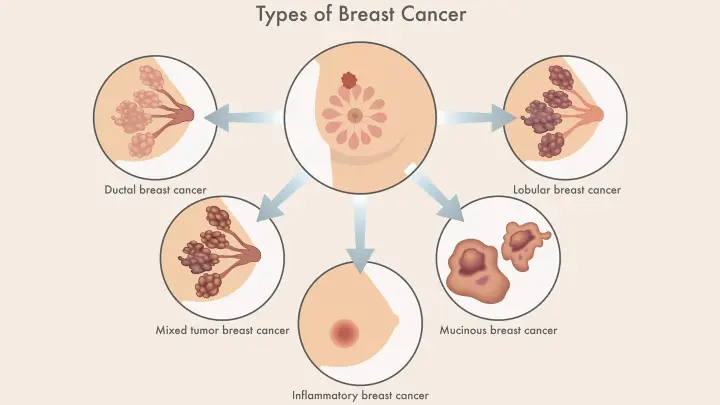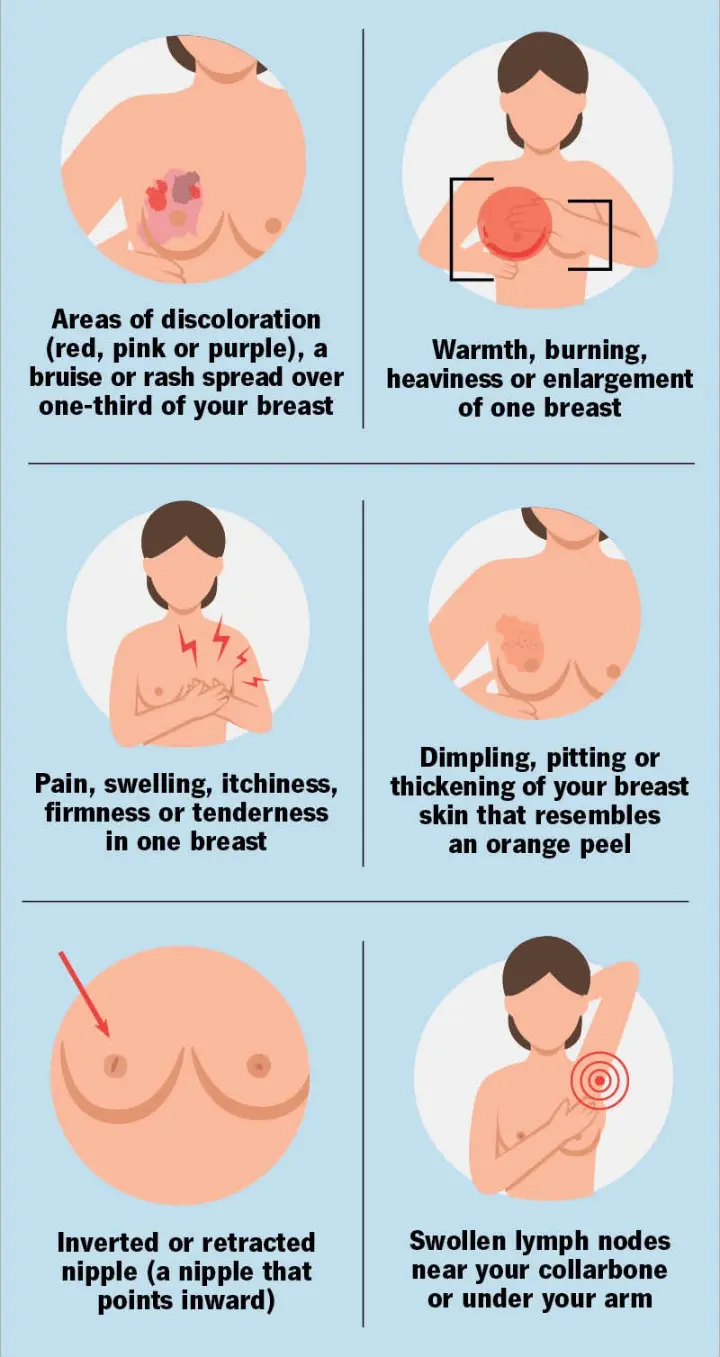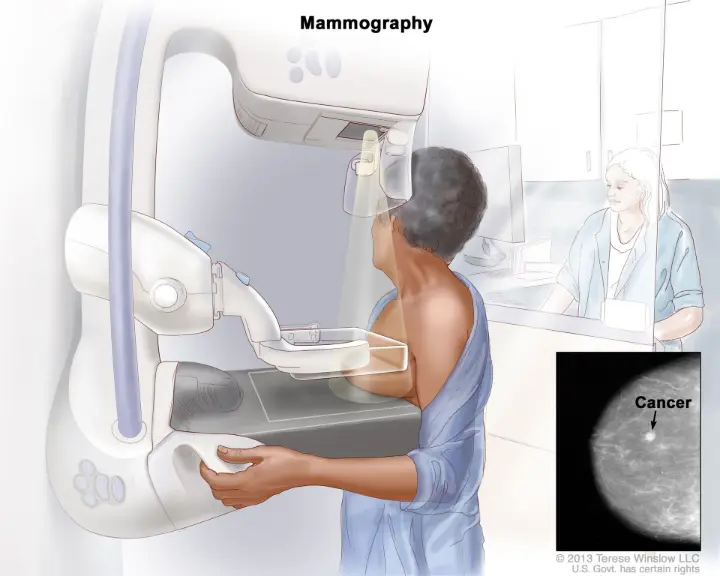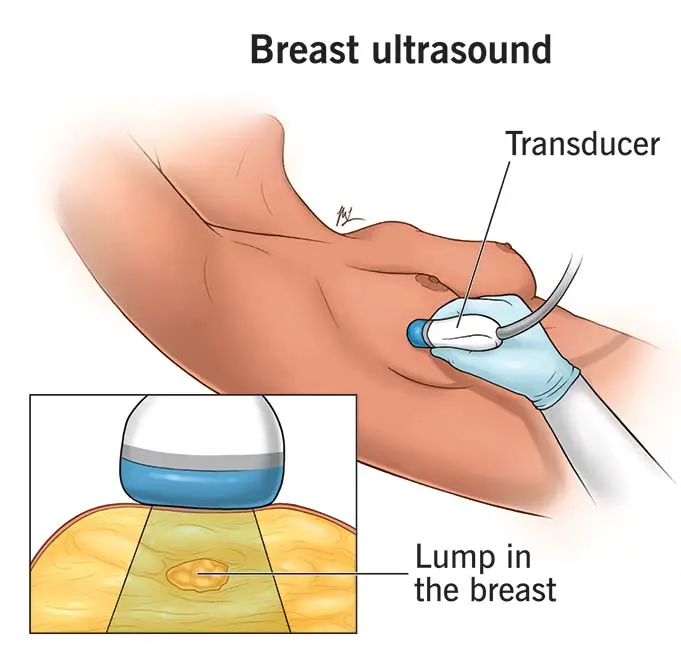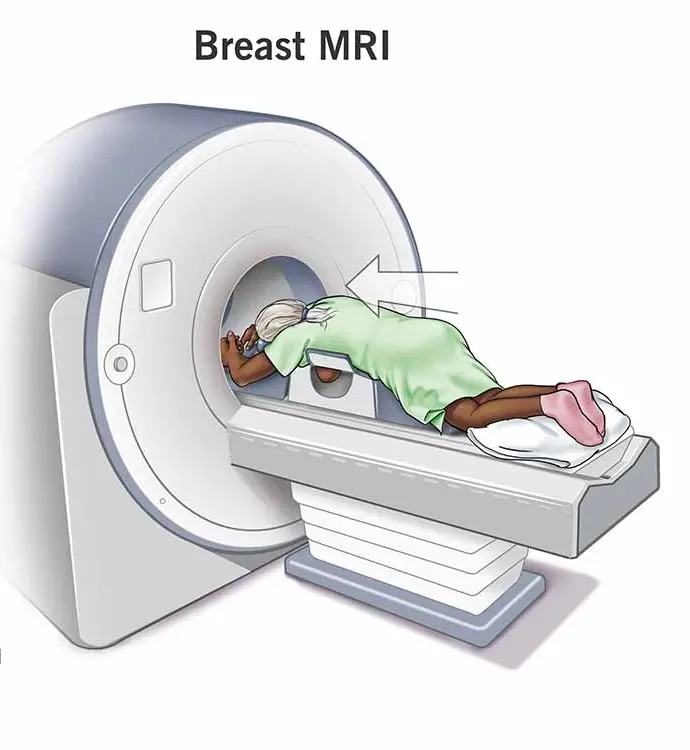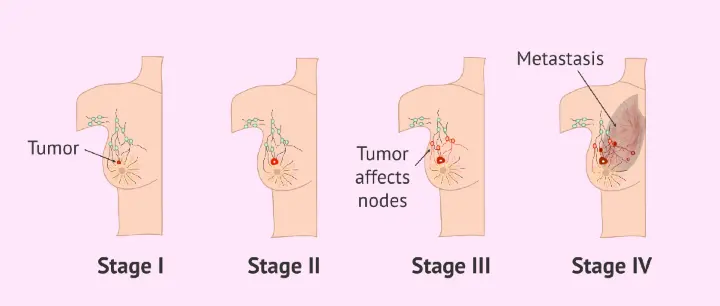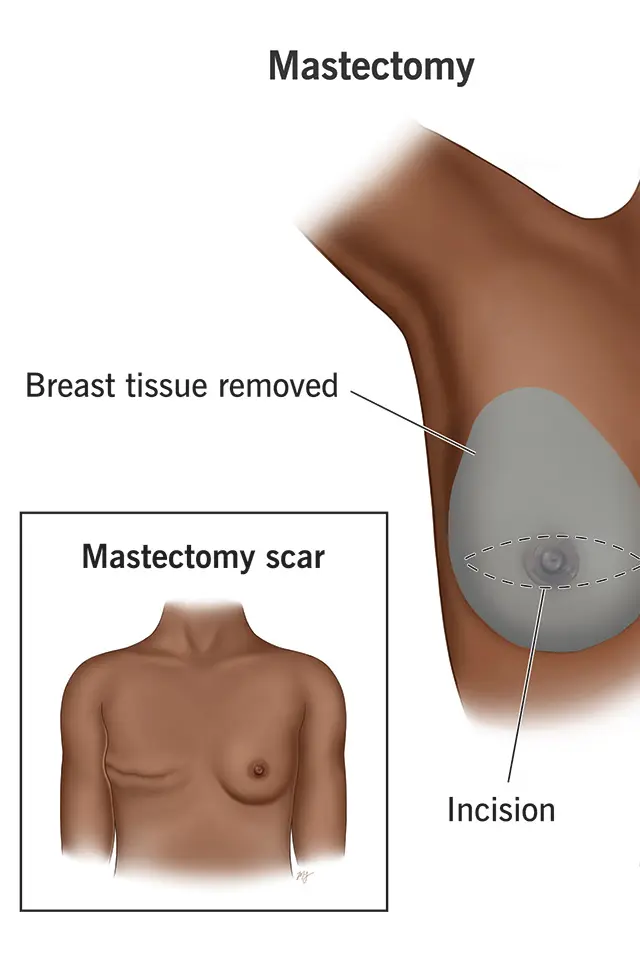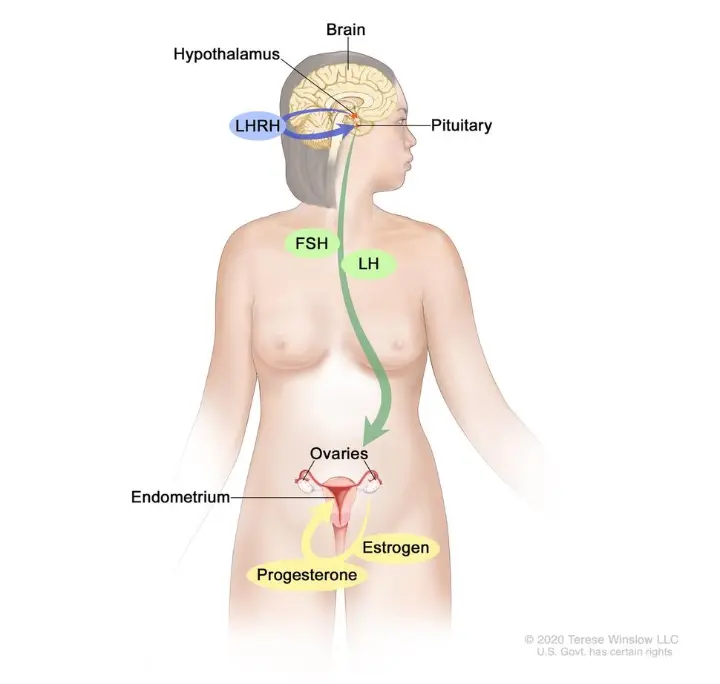1.What is Breast Cancer?
Breast cancer is a type of cancer that begins when cells in the breast grow uncontrollably. These abnormal cells can form a tumor, which may spread to other parts of the body if left untreated.
The breast is made up of lobules (glands that produce milk) and ducts (tubes that carry milk to the nipple). Breast cancer most often starts in these areas.Read more
Main types of breast cancer:
- Ductal carcinoma: Starts in the ducts. This is the most common type.
- Lobular carcinoma: Begins in the lobules of the breast.
- Other rare types: Inflammatory breast cancer, triple-negative breast cancer, HER2-positive breast cancer.
Breast cancer is the most common cancer among women worldwide, affecting millions each year. Men can also develop breast cancer, but it is much rarer.
2. Breast Cancer Symptoms and Early Warning Signs
Recognizing symptoms early increases the chances of successful treatment.
Common symptoms include:
- A lump or thickening in the breast or underarm
- Changes in breast size or shape
- Unexplained pain in the breast or nipple
- Redness, dimpling, or puckering of the skin on the breast
- Nipple discharge (other than breast milk), possibly with blood
- Inverted nipple (turning inward) suddenly
Tip: Not all lumps are cancerous, but any new change should be checked by a doctor promptly.
3. Breast Cancer Diagnosis and Screening Tests
Diagnosis often begins with screening tests to detect cancer early, even before symptoms appear.
Common diagnostic methods:
Mammogram: X-ray of the breast to detect suspicious areas.
Ultrasound: Uses sound waves to examine breast tissue.
MRI (Magnetic Resonance Imaging): Provides detailed images for high-risk patients.
Breast biopsy: A small sample of tissue is removed for lab analysis to confirm cancer.
Regular screening is recommended for women over 40, or earlier for those at higher risk.
4. Stages of Breast Cancer Explained
The stage of breast cancer describes how far it has spread, which helps guide treatment. Doctors often use the TNM system:
T (Tumor): Size of the tumor
N (Nodes): Spread to lymph nodes
M (Metastasis): Spread to distant organs
Stages:
- Stage 0: Non-invasive cancer, such as DCIS (Ductal Carcinoma in Situ)
- Stage 1: Small tumor, localized, minimal spread
- Stage 2: Larger tumor, may involve nearby lymph nodes
- Stage 3: Cancer spread to more lymph nodes and surrounding tissues
- Stage 4: Metastatic breast cancer — spread to distant organs like bones, liver, or lungs
5. Breast Cancer Treatment Options
Treatment depends on the type, stage, and patient’s overall health.
Common treatments include:
Surgery: Lumpectomy (removal of tumor) or mastectomy (removal of the entire breast).
Chemotherapy: Uses drugs to kill cancer cells, often before or after surgery.
Radiotherapy: High-energy rays target and destroy cancer cells.
Hormonal therapy: Blocks hormones like estrogen that help cancer grow (for hormone-sensitive cancers).
Targeted therapy & immunotherapy: Attacks specific cancer cell markers or boosts the immune system.
6. Breast Cancer Prevention and Healthy Habits
While some risk factors (like age or genetics) cannot be changed, a healthy lifestyle can help reduce risk:
- Maintain a healthy weight
- Exercise regularly
- Eat a balanced diet rich in fruits, vegetables, and whole grains
- Limit alcohol intake
- Avoid smoking
- Perform regular self-examinations and attend scheduled screenings
Final Word
Breast cancer awareness saves lives. Knowing the symptoms, getting regular screenings, and adopting healthy habits can make a big difference in prevention and early detection.
